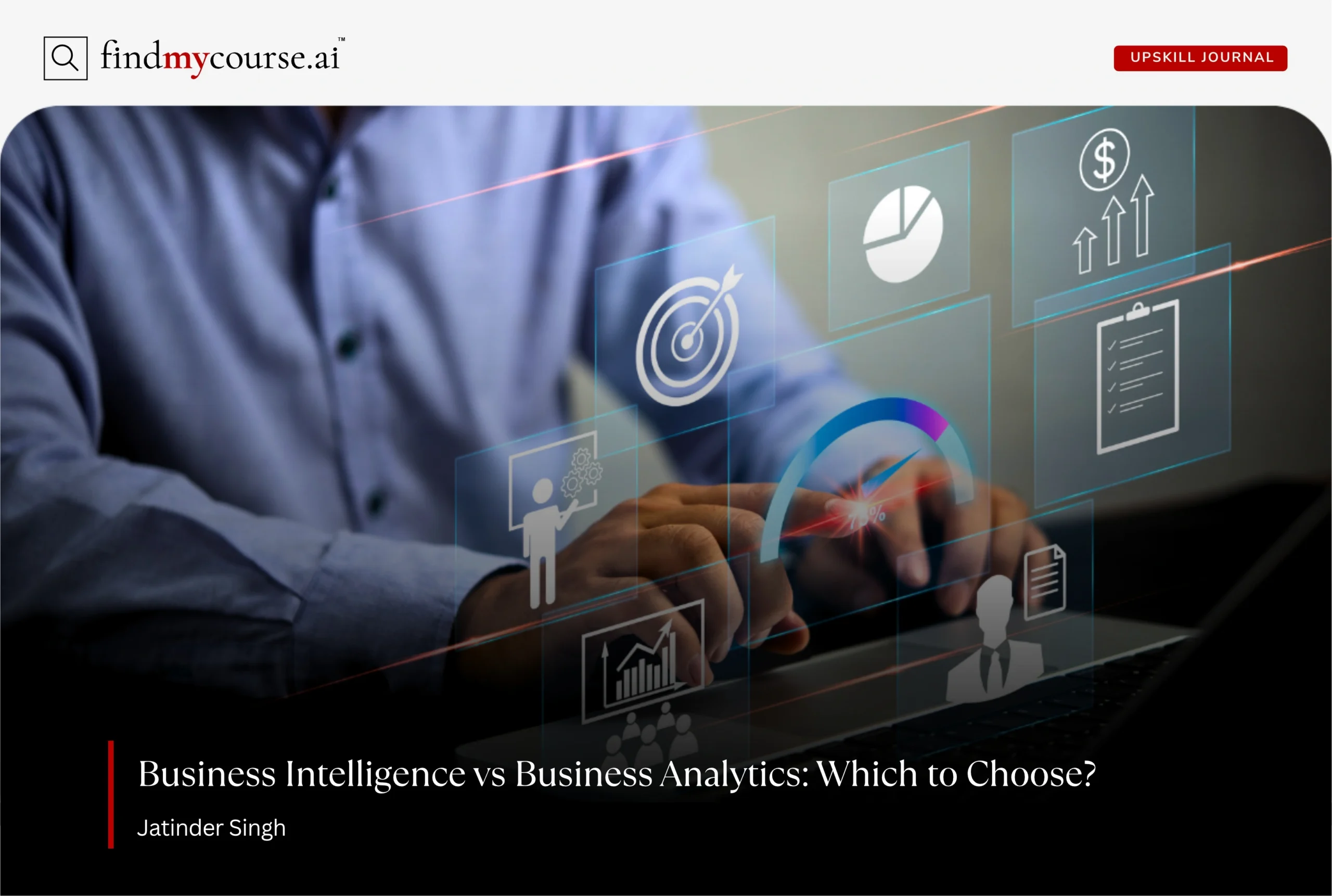In 2025, data is more than a business asset—it’s a lifeline. But knowing how to use data effectively is what sets successful companies apart. As organizations seek smarter, faster decision-making, many find themselves comparing Business Intelligence vs Business Analytics. Though the terms are often used interchangeably, they serve different purposes.
Choosing the right approach can streamline operations, uncover growth opportunities, and ultimately give your company a competitive advantage. In this article, we’ll break down the key differences, advantages, challenges, and how to integrate both strategies for lasting success. Whether you’re new to these concepts or learning to refine your strategy, this guide is for you.
Understanding the Basics: Business Intelligence vs Business Analytics
What is Business Intelligence (BI)?
Business Intelligence is about analyzing historical data to understand what has happened in your business. It uses tools like dashboards and reports to visualize trends, monitor performance, and track KPIs.
For example, a BI tool can show last month’s sales by region or compare year-over-year revenue. It provides clear, structured information that supports routine business decisions.
Key Features of BI:
- Focuses on past and current data
- Provides dashboards, reports, and scorecards
- Easy to use for non-technical users
- Supports day-to-day operations and strategic reviews
What is Business Analytics (BA)?
Business Analytics goes beyond surface-level data. It explores why certain outcomes occurred and what is likely to happen next. It often involves advanced techniques such as predictive modeling, data mining, and machine learning.
BA is useful for forecasting trends, identifying risks, and optimizing business processes. While BI shows what happened, BA asks, why did it happen, and what should we do about it?
Key Features of BA:
- Uses historical + real-time + predictive data
- Uses advanced techniques like modeling and machine learning
- Requires more technical knowledge or expert teams
- Supports innovation and future-focused decisions
Business Intelligence vs Business Analytics: Key Differences
| Dimension | Business Intelligence (BI) | Business Analytics (BA) |
| 1. Objective & Focus | Descriptive analytics: focuses on what happened and monitoring performance | Predictive & prescriptive analytics: focuses on what might happen and what to do next |
| 2. Time Orientation | Analyzes past and current data | Projects into the future using trends, models, and forecasting |
| 3. Tools & Technologies | Tools like Power BI, Tableau, Looker, Qlik for reporting and visualization | Tools like Python, RapidMiner, and cloud-based AI/ML platforms |
| 4. Skill Requirements | Designed for ease-of-use by business users with minimal technical skills | Requires technical expertise in statistics, programming, and machine learning |
| 5. Data Type | Works mainly with structured data from internal sources like ERP, CRM, or sales systems | Can work with structured, semi-structured, and unstructured data, including social media and IoT data |
When to Use: Business Intelligence vs Business Analytics
Choosing between Business Intelligence (BI) and Business Analytics (BA) depends on your organization’s needs, resources, and readiness. Each serves a distinct purpose—BI provides visibility into the present and past, while BA looks ahead to shape the future.
Use Business Intelligence (BI) if your goal is to stay on top of what’s happening in your business today. BI tools help teams track performance, spot issues, and make quick decisions—without needing deep technical skills. It’s a great fit if:
- You want regular updates on KPIs like sales, costs, or efficiency
- Your team needs clear, easy-to-read dashboards and reports
- You’re focused on improving daily operations
- You’re just starting out with data and want to build a strong foundation
Example: A retail chain uses BI to check daily sales, compare store performance, and manage staffing needs.
Use Business Analytics (BA) when you’re ready to look ahead and plan for the future. BA helps you find patterns, predict outcomes, and make smarter, data-driven decisions. It’s a good choice if:
- You want to forecast future trends like customer demand or revenue
- You’re trying to understand the “why” behind what’s happening
- You have tools or experts who can work with advanced analytics
- You’re aiming to innovate and grow strategically
Example: A logistics company uses BA to predict delivery delays and adjust routes in real time based on traffic and weather.
Can You Use Both? Yes—Here’s Why a Hybrid Strategy Works
The Power of Integration
Rather than choosing one over the other, many businesses in 2025 are combining BI and BA for a complete data strategy. BI gives immediate visibility, while BA adds insight and foresight. Together, they create a loop of continuous improvement.
Step-by-Step to Hybrid Strategy
- Start with BI: Build a strong foundation by centralizing your data and creating clear dashboards.
- Introduce BA: Apply predictive models to high-impact areas (e.g., forecasting demand, reducing churn).
- Upskill or hire experts: Train existing teams and bring in data specialists where needed.
- Scale gradually: Use success stories to expand analytics efforts across more departments.
Key Challenges When Adopting BI and BA
1. Data Quality and Consistency
Good data is the foundation for both BI and BA. Without it, insights can be misleading. Focus on cleaning, standardizing, and securing your data.
2. Talent and Tools
While BI tools are more accessible, BA often needs skilled professionals and more complex platforms. Invest in training or consider partnerships to close the skill gap.
3. Budget and Resources
BI can be implemented quickly with moderate investment. BA requires a longer-term commitment but offers higher strategic returns. Balance short-term wins with long-term goals.
Measuring Success: Metrics That Matter
When evaluating the effectiveness of Business Intelligence vs Business Analytics, measuring the right outcomes is key.
Business Intelligence (BI): Measuring What’s Happening Now
| Success Metric | What It Tracks | Top Tool (2025) |
| Revenue Growth | Past and current income trends | Power BI |
| Operational Efficiency | Workflow speed, performance bottlenecks | Tableau |
| Customer Satisfaction (CSAT) | Customer feedback, service quality ratings | Zoho Analytics |
| Timely Reporting | Automated reporting schedules, real-time visibility | Looker |
Business Analytics (BA): Measuring What’s Coming Next
| Success Metric | What It Measures | Top Tool (2025) |
| Forecast Accuracy | Accuracy of future predictions (sales, demand, etc.) | Azure Machine Learning |
| Customer Lifetime Value (CLV) | Projected long-term customer value | Google Cloud Vertex AI |
| Churn & Retention Rates | Likelihood of customer loss or loyalty | IBM Watson Studio |
| ROI of Predictive Models | Business returns from analytics investments | RapidMiner |
By aligning your metrics with your goals—BI for visibility and stability, BA for strategy and innovation—you ensure that your data efforts lead to meaningful results. A balanced approach helps businesses in 2025 stay competitive, proactive, and responsive to change.
What’s New in 2025: Emerging Trends That Matter
1. Augmented Analytics
Platforms like Microsoft Fabric,, and Qlik Sense now use AI to automatically clean data, generate visualizations, and offer decision recommendations. Business users no longer need deep analytics skills to uncover insights—they just ask questions, and the tools respond.
2. Embedded Analytics
Solutions such as Tableau Embedded, Looker, and Zoho Analytics are integrating BI directly into business apps like CRMs and ERPs. This brings contextual insights into daily workflows, helping teams take informed actions without switching platforms.
3. Real-Time Analytics
With tools like Google Cloud’s BigQuery, and AWS Kinesis, companies now monitor live data to detect fraud, track inventory shifts, or reroute logistics in real time. Businesses gain the power to act instantly—not just analyze after the fact.
Final Thoughts
At the end of the day, success in 2025 won’t come from simply knowing the difference between Business Intelligence vs Business Analytics—it will come from knowing how and when to use both. BI keeps your operations grounded and visible, while BA pushes your thinking forward. Together, they create a complete, intelligent approach to decision-making that helps businesses thrive in real time and prepare for what’s next.
In 2025, the winners don’t just collect data—they use it to learn faster, act smarter, and lead with confidence. So, start small, stay curious, and build your strategy as you grow. And if you ever feel stuck, our AI assistant is just a question away.


